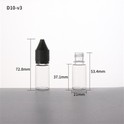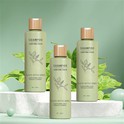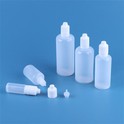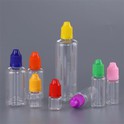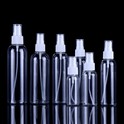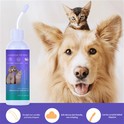How Are Plastic Bottles Made?
Plastics are made from oil or natural gas, which are made of molecules called hydrocarbons. When you heat hydrocarbons to very high temperatures, they break down into smaller molecules called monomers. There are many types of hydrocarbon monomers, such as methane, ethane, propane, and butane.
To make plastic, monomers are joined together to make a larger molecule called a polymer. The different types of plastic polymers are made of different combinations of monomers. These polymers are formed into pellets, powders, flakes, or liquids, which are the raw plastic material.
At the bottling factory, the raw plastic is put into a machine that heats it to a high temperature so that it becomes a liquid. The liquid is then injected into a bottle-shaped mold where it hardens.
There are two groups of polymers: thermoset and thermoplastics. Thermoset plastics are made of polymers made with chemical bonds that can't be reversed. Once these plastics are molded, they can't be broken down. Bakelite is an example of thermoset plastic. Because they can't be broken down, thermoset plastics aren't recyclable.
Thermoplastics, on the other hand, can be melted and remolded into newer materials. Items made from thermoplastics can potentially be recycled. There are several types of thermoplastics, such as polypropylene (PP), polyethylene (PE), polyvinyl chloride (PVC), polystyrene, polyethylene terephthalate (PET), and polycarbonate. Water bottles are generally made of thermoplastics.
Most water bottle makers intend for their products to be single-use. But if you're concerned about the environment or need a container in a pinch, you've probably wondered if you can refill them. Whether or not this is safe depends on the type of plastic your water bottle is made of.
Types of Plastic Bottles
Plastics are labeled with a Resin Identifying Code (RIC), usually molded or printed in raised type on the bottom of the item. RIC labels are usually a number from "1" to "7" printed inside either a solid triangle or one made from arrows. Below the triangle, you will also see the abbreviation for the plastic resin type. Unfortunately, these RIC labels only tell you what plastic the package is made from and not whether or not the bottle can be recycled or reused. However, water bottles are usually made from three types of thermoplastics that can be recycled:
Polyethylene terephthalate (PET). Bottles made from PET are labeled with an RIC of "1." PET is a strong, light plastic often used for water, food, and carbonated beverages, like soda.‌ Unlike other plastics, PET is fully recyclable, although only about 30% of it is actually recycled.
High-density polyethylene (HDPE). Bottles made from HDPE are labeled with a "2." HDPE is a sturdy, durable plastic, which makes it a good material for detergent bottles, soap bottles, and gallon-sized liquid containers. Milk jugs are often made from HDPE, and most centers can recycle this type of plastic.
Other. Plastics with an RIC of "7" don't fit under any other category and they're generally not recyclable. Examples include polycarbonate sports bottles, such as Nalgene.

